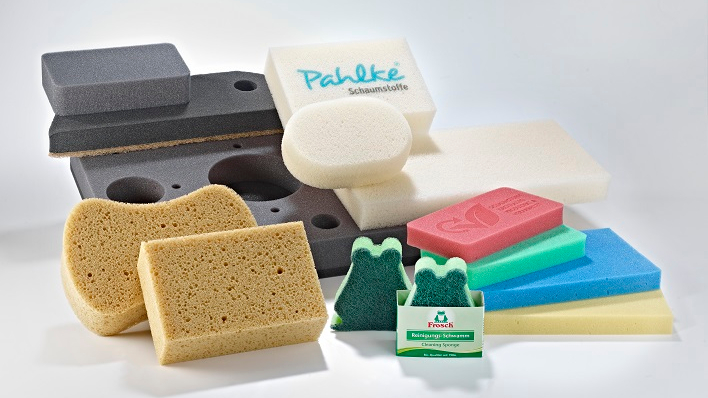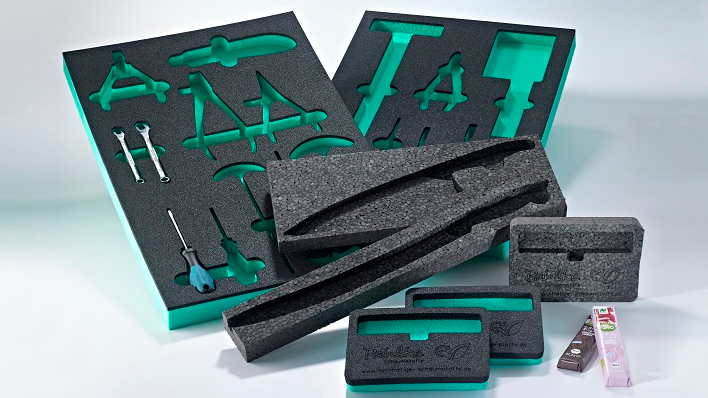Sustainable materials
In addition to sustainable materials such as recycled composite foam, we also process sustainable foams. Conventional foam is petroleum-based. The aim of sustainable foam materials is to reduce the proportion of petroleum in the foam.
In cooperation with our foam suppliers and other partner companies, we are currently driving various projects that relate to sustainable foams. Right now, we are focusing on four different processes that make it possible to achieve a sustainable proportion of up to 25 per cent.
Four processes to produce sustainable foam
Process 1: Renewable raw materials
In foams based on renewable raw materials, the crude oil (petroleum) used in the production of polyols - one of the main components of PUR foam materials - is partially replaced by vegetable oils, such as castor or rapeseed oil. When castor oil is used in polyols, for example, a sustainable proportion of up to 26 per cent can be achieved in the foam material.
Process 2: Chemical recycling
Production residues from foam processing can be chemically recycled to form new polyols and subsequently admixed again during the production of new foams. Their addition makes it possible to achieve a sustainable proportion of up to 17 per cent in the foam.
Process 3: Solid dispersion
In solid dispersion, used rigid foams - for example, from the construction sector - are finely ground and incorporated into the production of foam materials. Technical limitations mean that a sustainable proportion of up to 10 per cent can be achieved. If solid dispersion is combined with other processes or materials, the sustainable proportion can be increased even further.
Process 4: CO2 upcycling
CO2 upcycling makes it possible to capture CO2 as a by-product in chemical production processes and reuse it in the production of new polyols, instead of releasing it into the atmosphere. This reduces the use of fossil components and does not pollute the environment in the form of emissions. By using CO2-based polyols, a sustainable proportion of up to 13 per cent can be achieved.
In order to promote the use of sustainable foams, we have been resolutely working with various suppliers and project partners for many years on the development and marketing of foam materials with sustainable components and their sustainable processing. We have created a new topic page where you can learn more about the various processes and approaches involved in producing sustainable foam materials.
PUR foam materials have been part of our core business for 60 years and they are now also available as a sustainable alternative.
Four processes for producing sustainable PUR foams are currently available. All of these processes have one thing in common—they reduce the foam’s petroleum content, improving its climate footprint. Sustainable foam materials have almost the same technical properties as conventional PUR foams and can therefore be used as a sustainable alternative for many applications.
We can now offer sustainable PE foam materials as well as conventional PE foam materials. On account of their closed cellular structure, sustainable and conventional PE foam materials are used in exactly the same way for absorbing sound, insulating, and sealing as well as in packaging applications.
The sustainable alternatives likewise boast properties such as low density, outstanding resistance to ageing and weathering, good sound and heat insulation, plus very good resistance to commercially available acids, alkalis, and other chemicals.

Lorenz Cramer
Head of Sales
+49 (0) 2645 9523-14
Send email

Jana Bastian
Sales
+49 (0)2645 9523-18
Send email

Richard Maier
Sales
+49 (0) 2645 9523-37
Send email

Natalja Weigel
Sales
+49 (0) 2645 9523-28
Send email




